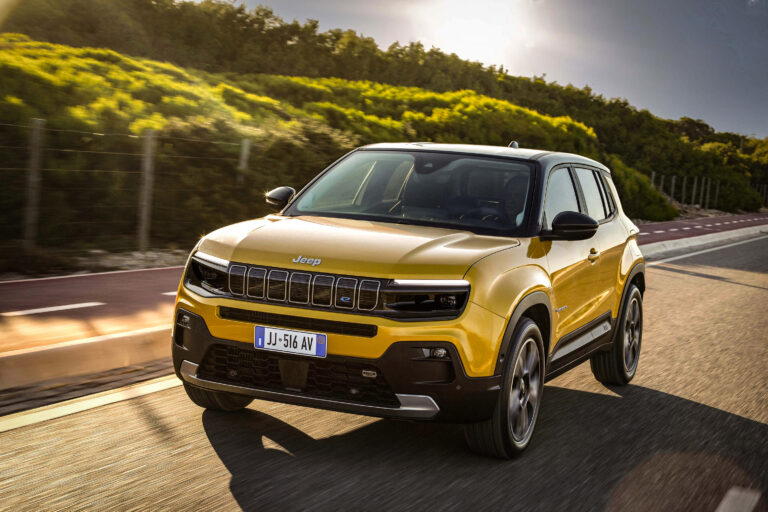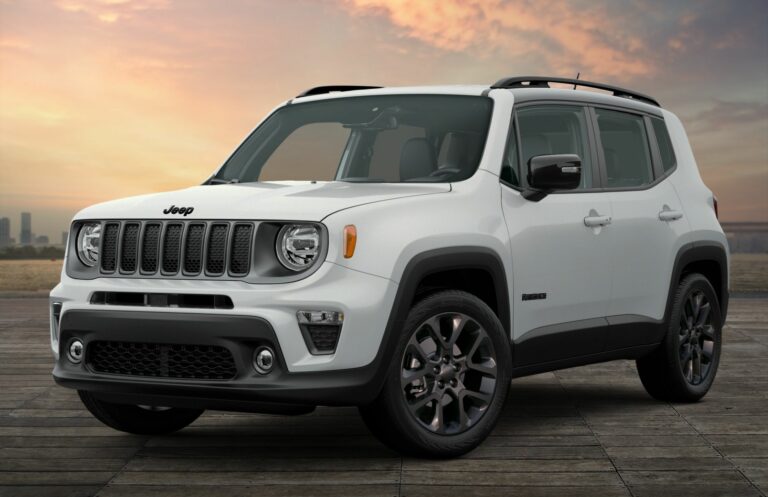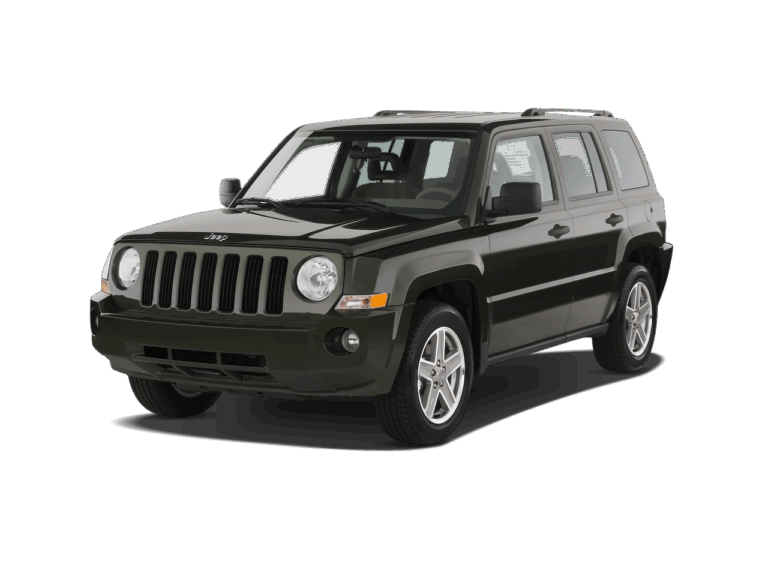Classic Jeep Trucks For Sale: A Comprehensive Buyer’s Guide to Automotive Icons
Classic Jeep Trucks For Sale: A Comprehensive Buyer’s Guide to Automotive Icons jeeps.truckstrend.com
Introduction: The Enduring Allure of Classic Jeep Trucks
Few vehicles evoke the same sense of rugged adventure, utilitarian charm, and timeless American spirit as classic Jeep trucks. These aren’t just old pickups; they are tangible pieces of automotive history, representing an era of no-nonsense engineering, go-anywhere capability, and distinctive design. From the humble workhorses that helped rebuild a nation to the stylish cruisers that defined an era, classic Jeep trucks hold a special place in the hearts of enthusiasts, collectors, and those simply seeking a vehicle with character that stands out from the modern automotive landscape.
Classic Jeep Trucks For Sale: A Comprehensive Buyer’s Guide to Automotive Icons
The market for classic Jeep trucks for sale is vibrant, driven by a growing appreciation for vintage 4x4s, a desire for unique vehicles, and the undeniable appeal of their robust simplicity. Whether you’re a seasoned collector looking for a pristine example, an off-road enthusiast seeking a capable platform for adventure, or a DIY mechanic eager for a rewarding restoration project, understanding the nuances of these iconic vehicles is key. This comprehensive guide will navigate you through the world of classic Jeep trucks, offering insights into their history, models, what to look for, and how to make an informed purchase.
I. Why Classic Jeep Trucks Endure: A Legacy of Utility and Style
The story of Jeep trucks is interwoven with the very fabric of American industry and exploration. Born from the wartime necessity of the Willys MB, the civilian Jeep (CJ) quickly spawned truck variants designed for diverse tasks, from farming to heavy hauling. What began as purely functional vehicles evolved, over decades, into a range of models that blended capability with increasing levels of comfort and style.
Their enduring appeal stems from several key factors:
- Robust Simplicity: Engineered for durability, many classic Jeep trucks feature straightforward mechanicals that are easier to diagnose and repair than modern vehicles.
- Unmatched Off-Road Prowess: True to the Jeep name, most models offer genuine 4×4 capability, making them highly desirable for backcountry adventures.
- Distinctive Aesthetics: From the iconic seven-slot grille to their purposeful lines, classic Jeep trucks possess an aesthetic that is both nostalgic and perpetually cool. They stand out in a sea of generic modern vehicles.
- Investment Potential: Well-maintained or professionally restored examples can appreciate in value, making them not just a passion project but also a tangible asset.
- Customization Canvas: Their relatively simple architecture makes them ideal candidates for modifications, from engine swaps to suspension lifts, allowing owners to personalize their ride.
- Community and Heritage: Owning a classic Jeep truck connects you to a passionate community of fellow enthusiasts and a rich heritage of American ingenuity.

II. Identifying Your Classic Jeep Truck: Key Models and Eras

The lineage of Jeep trucks is diverse, with several distinct models spanning different eras. Understanding these will help you narrow down your search.
- Willys-Overland Pickups (1940s-1960s): These early trucks, including the Willys Jeep Truck and Wagon, were among the first civilian Jeep offerings. Characterized by their rugged, utilitarian design and flat fenders, they are true workhorses. They represent the dawn of the civilian Jeep and are highly sought after by collectors for their historical significance.
- Key Feature: Often feature the iconic "Willys" stamping on the tailgate.

- Jeep FC (Forward Control) Series (1956-1965): A radical departure from traditional truck design, the FC series featured a cab-over-engine configuration, maximizing cargo space in a compact footprint. Available in various wheelbases (FC-150, FC-170), they are now highly collectible due to their unique styling and relative rarity.
- Key Feature: Distinctive short nose and flat-faced grille.
- Jeep Gladiator / J-Series (1963-1988): This is arguably the most recognizable classic Jeep truck line. Initially named the Gladiator, it was rebranded as the J-Series (J10, J20, etc.) in the mid-1970s. These trucks shared their platform with the Wagoneer and Cherokee (SJ), offering a blend of robust utility and increasingly luxurious appointments. They came with various bed lengths (Townside, Thriftside), engine options (AMC inline-sixes, V8s), and trim levels (Honcho, Laredo).
- Key Feature: Full-size pickup presence, often with characteristic "Rhino" grille or later "vertical bar" grille, and shared styling cues with the SJ Wagoneer.
- Jeep Comanche (MJ) (1986-1992): Based on the unibody Cherokee (XJ) SUV, the Comanche was Jeep’s answer to the compact pickup craze of the 1980s. While not as "classic" in the traditional sense as the older models, its unibody construction, excellent handling, and available 4.0L inline-six engine make it a highly practical and increasingly desirable classic for daily driving and light off-roading.
- Key Feature: Unibody design, shared front end with the XJ Cherokee, compact yet capable.
- Military Variants (e.g., M715): While not civilian trucks, the military-spec M715 (based on the J-Series) is often found in the classic market. These "Kaiser Jeeps" are incredibly rugged, but typically require significant work to make them road-legal and comfortable for civilian use.
III. The Hunt Begins: Where to Find Classic Jeep Trucks for Sale
Finding the right classic Jeep truck requires patience and knowing where to look.
- Online Marketplaces:
- Bring a Trailer (BaT): Excellent for well-documented, higher-end examples. Detailed photos and community comments.
- eBay Motors: A wide range of conditions and prices, from parts trucks to restored beauties. Use specific search terms.
- Hemmings Motor News / ClassicCars.com: Dedicated classic car marketplaces with a good selection.
- Facebook Marketplace & Classic Jeep Truck Groups: Often the best source for direct owner sales, potential local finds, and connecting with enthusiasts.
- Specialized Dealers & Restorers: Many businesses specialize in vintage 4x4s. While prices might be higher, you often get a thoroughly inspected or restored vehicle.
- Auctions: Classic car auctions (e.g., Mecum, Barrett-Jackson, local auctions) can offer unique opportunities, but require quick decision-making and pre-inspection.
- Local Classifieds & Word of Mouth: Don’t underestimate old-fashioned methods. Sometimes the best deals are found through local flyers, community boards, or by simply talking to classic car enthusiasts.
- Car Shows & Swap Meets: Great places to see vehicles in person, network with owners, and sometimes find trucks for sale.
IV. What to Look For: A Buyer’s Guide to Classic Jeep Trucks
Purchasing a classic vehicle is different from buying a modern one. A thorough inspection is paramount.
- Rust: The Ultimate Enemy: This is the most critical factor. Classic Jeeps, especially those from rust-prone regions, are highly susceptible.
- Frame: Inspect the entire frame for rot, cracks, or poor repairs. Pay attention to spring hangers, crossmembers, and body mounts.
- Body Panels: Wheel wells, rocker panels, cab corners, floorboards (especially under the carpet), bed floor, and tailgate are common rust spots. Check for bubbling paint, indicating underlying rust or shoddy bondo work.
- Inner Fenders & Firewalls: Often overlooked but crucial.
- Engine & Drivetrain:
- Leaks: Look for oil, coolant, or transmission fluid leaks.
- Sounds: Listen for unusual noises (knocking, ticking, grinding) from the engine, transmission, or axles.
- 4WD Engagement: Test the transfer case thoroughly in both high and low range.
- Originality vs. Swaps: Decide if you want an original powertrain or a more modern, potentially more reliable engine swap (e.g., LS swap). Swaps can add complexity but improve performance.
- Suspension & Steering:
- Sagging: Are the springs sagging? This indicates wear.
- Bushings: Check for cracked or worn bushings.
- Steering Play: Excessive play in the steering wheel indicates worn steering components (tie rods, drag link, steering box).
- Brakes: Test thoroughly. Older trucks may have drum brakes, which perform differently from modern disc brakes. Check for fluid leaks.
- Interior Condition:
- Seats & Upholstery: Tears, cracks, or excessive wear.
- Dashboard: Cracks, missing trim, non-functional gauges.
- Electrical: Test all lights, wipers, horn, heater, and radio. Wiring issues can be complex to resolve.
- Documentation:
- Ensure a clean, clear title matching the VIN.
- Service Records: Any history of maintenance or repairs adds value and peace of mind.
- Original Manuals/Paperwork: A bonus for collectors.
- Modifications: Assess the quality of any modifications. A poorly done lift kit or engine swap can create more problems than they solve. Look for professional work.
- Pre-Purchase Inspection (PPI): Always get an independent mechanic specializing in classic vehicles or 4x4s to perform a PPI, even if it’s an hour’s drive away. Their trained eye can spot issues you might miss.
V. Restoration vs. Driver: Understanding Condition and Cost
The condition of a classic Jeep truck directly impacts its price and your commitment level.
- Concours/Show Quality: These are vehicles that have undergone a meticulous, often frame-off, restoration to factory specifications or better. They are typically trailered to shows and command the highest prices. Expect to pay premium.
- Restored Driver: A truck that has been restored to a very good, presentable condition but is intended to be driven regularly. It looks great, runs well, but might have minor imperfections. This is often the sweet spot for enthusiasts.
- Survivor/Original: A truck that has been exceptionally well-preserved over decades, largely untouched by restoration. These are rare and highly prized for their originality, often fetching high prices if truly unmolested.
- Good Driver: A truck that is functional, safe, and presentable but shows its age. It might have dings, faded paint, or some interior wear, but it runs reliably. Good for those who want to use it and aren’t afraid of minor fixes.
- Project/Parts Truck: These are the most affordable but require significant time, skill, and financial investment. They might be non-running, heavily rusted, or incomplete. Only for those with a clear vision, a budget, and mechanical aptitude.
Budgeting: Beyond the purchase price, factor in:
- Insurance: Specialized classic car insurance is often cheaper but has usage restrictions.
- Maintenance: Older vehicles require more frequent checks and can have unexpected issues.
- Parts: While many parts are available, some specific trim pieces or mechanical components can be hard to source and expensive.
- Restoration Costs: If you buy a project, be realistic. A full restoration can easily cost two to three times the purchase price, or more.
VI. Owning a Classic Jeep Truck: Tips for Maintenance and Enjoyment
Owning a classic Jeep truck is a rewarding experience, but it comes with its own set of responsibilities.
- Regular Maintenance: Adhere to a strict maintenance schedule. Check fluids frequently, grease chassis points, inspect belts, hoses, and wiring. Preventative maintenance is key to reliability.
- Parts Availability: For J-Series and Comanche models, parts availability is generally good, thanks to shared components with other AMC/Jeep vehicles and a strong aftermarket. Older Willys and FC parts can be more challenging to find, often requiring specialized suppliers or fabrication.
- Specialized Insurance: Look into classic car insurance policies. They often have lower premiums than standard auto insurance but might have mileage limits or require the vehicle to be stored in a secure location.
- Driving Experience: Be prepared for a different driving experience. Older trucks often lack power steering, power brakes, and modern comforts. They are slower, louder, and require more driver input. Embrace the analog experience!
- Community Engagement: Join classic Jeep clubs, online forums, and attend local car shows. The classic Jeep community is vibrant and a fantastic resource for advice, parts, and camaraderie.
Conclusion: Driving a Legend
The appeal of classic Jeep trucks for sale is undeniable. They offer a unique blend of historical significance, rugged capability, and distinctive style that modern vehicles simply can’t replicate. Whether you’re drawn to the utilitarian charm of a Willys, the iconic presence of a J-Series Gladiator, or the practical versatility of a Comanche, each model tells a story of American engineering and adventure.
Embarking on the journey to own one of these legends requires diligent research, a keen eye during inspection, and a realistic understanding of the commitment involved. However, the reward of cruising down the road in a piece of automotive history, turning heads and sparking conversations, is truly unparalleled. With careful consideration and a passion for these enduring machines, you can find the perfect classic Jeep truck to call your own and create new memories for generations to come.
Classic Jeep Trucks For Sale: Estimated Price Guide
Please note: Prices are highly variable based on condition, originality, location, modifications, and market demand. These are general estimates in USD.
| Model | Year Range | Condition: Project (Needs Major Work) | Condition: Driver (Good, Functional) | Condition: Restored (Excellent, Show-Ready) |
|---|---|---|---|---|
| Willys-Overland Pickup | 1947-1965 | $5,000 – $15,000 | $15,000 – $35,000 | $35,000 – $70,000+ |
| Jeep FC (Forward Control) Series | 1956-1965 | $8,000 – $20,000 | $20,000 – $45,000 | $45,000 – $90,000+ |
| Jeep Gladiator / J-Series (J10/J20) | 1963-1988 | $4,000 – $12,000 | $12,000 – $30,000 | $30,000 – $60,000+ |
| Jeep Comanche (MJ) | 1986-1992 | $3,000 – $8,000 | $8,000 – $20,000 | $20,000 – $40,000+ |
| Military M715 | 1967-1969 | $7,000 – $18,000 | $18,000 – $40,000 | $40,000 – $75,000+ |
Frequently Asked Questions (FAQ) About Classic Jeep Trucks For Sale
Q1: Are classic Jeep trucks reliable for daily driving?
A1: It depends heavily on the specific model, its condition, and how well it has been maintained or restored. A well-maintained Comanche (MJ) or a later J-Series with a modern engine swap can be quite reliable. Older Willys or FC models, while charming, are generally less suited for daily driving due to lack of modern comforts, slower speeds, and potentially more frequent maintenance needs. Always get a pre-purchase inspection.
Q2: How much does it cost to restore a classic Jeep truck?
A2: Restoration costs vary wildly. A full, professional, frame-off restoration can easily range from $40,000 to $100,000+, depending on the model, condition of the donor vehicle, and desired level of perfection. A "driver quality" restoration might be $15,000 to $30,000. DIY projects can save labor costs but require significant time and skill. Always budget more than you initially expect.
Q3: Are parts hard to find for classic Jeep trucks?
A3: For J-Series (Gladiator) and Comanche models, parts availability is generally good, as many mechanical components were shared with other popular AMC/Jeep vehicles (like the Wagoneer, Cherokee XJ). Aftermarket support is also strong. For older Willys and especially FC models, specific body panels, trim pieces, and unique mechanical parts can be much harder to source and more expensive, often requiring specialized suppliers or custom fabrication.
Q4: What’s the best classic Jeep truck for off-roading?
A4: All classic Jeep trucks offer some level of off-road capability. The J-Series (Gladiator) is a popular choice due to its robust full-size frame, solid axles, and ample aftermarket support for lifts and modifications. The Comanche (MJ) is also highly capable, especially with its excellent 4.0L engine, though its unibody construction means frame modifications are more complex. Willys trucks are surprisingly capable but might lack modern comforts for extended off-road trips.
Q5: What’s the difference between a Gladiator and a J-Series?
A5: The "Gladiator" was the original name for Jeep’s full-size pickup truck line, introduced in 1963. In 1971, Jeep dropped the "Gladiator" name and simply referred to the trucks by their weight class designations, such as J10, J20, J30, etc. So, all Gladiators are J-Series trucks, but not all J-Series trucks were called Gladiators. The models themselves were largely the same, undergoing minor styling and powertrain updates over their long production run until 1988.
Q6: Should I buy a restored classic Jeep truck or a project?
A6: If you lack significant mechanical experience, time, or a large budget for restoration, buying a restored or "driver quality" classic is usually the better option. You’ll pay more upfront, but you’ll avoid the potentially overwhelming challenges and hidden costs of a full restoration. A "project" is best suited for experienced mechanics, those with a strong DIY spirit, or someone willing to pay a professional restorer.
![]()




